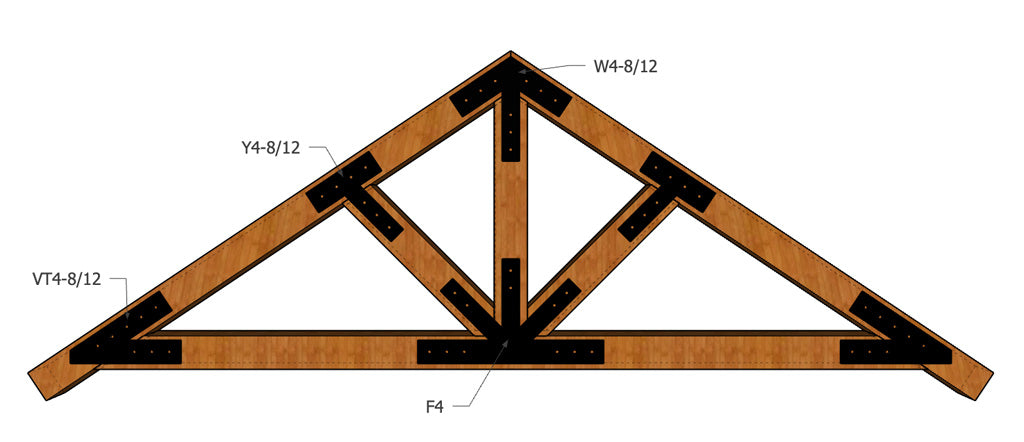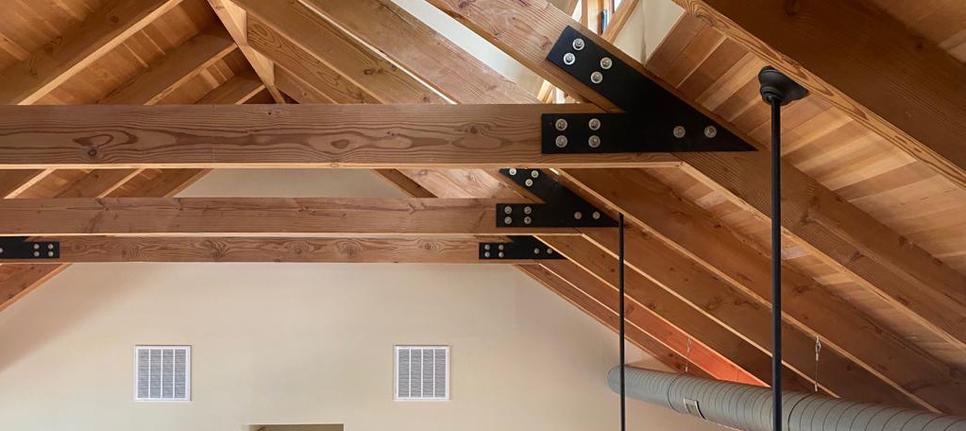Welcome to the fascinating world of decorative truss connector plates! If you’re here, chances are you’re looking to elevate the aesthetic appeal of your structures while maintaining functionality and structural integrity. As someone who has spent years in the construction and design industry, I can tell you that a little detail, like a decorative truss connector plate, can make a big difference. In this guide, we’ll explore various aspects of these plates, including their designs, applications, and even how they can enhance your projects.
What Are Decorative Truss Connector Plates?
Decorative truss connector plates are structural metal plates that are used to connect wooden trusses. They serve both functional and aesthetic purposes. Not only do they provide additional strength and stability to the truss system, but they can also add a unique design element to a building’s overall appearance.
History of Truss Connector Plates
The use of truss connector plates dates back several decades. Originally designed for functionality, they have evolved into decorative elements that can transform the look of a room or building. Today’s plates come in various styles, materials, and finishes, allowing for customization to suit different architectural themes.
Benefits of Decorative Truss Connector Plates
Decorative truss connector plates offer a host of benefits beyond their aesthetic appeal. Let’s delve into some of these advantages below.
1. Structural Integrity
Truss connector plates are engineered to provide exceptional strength, ensuring that the truss system remains stable and durable over time. They help distribute loads evenly, reducing the risk of structural failure.

2. Aesthetic Appeal
With a wide range of designs available, these plates can enhance the visual appeal of your structure. Whether you are going for a rustic or modern look, there are styles to match any decor.
3. Cost-Effective Solution
Using decorative truss connector plates can save you money in the long run. Not only do they eliminate the need for additional support structures, but they can also reduce labor costs during installation.

4. Versatile Applications
These plates are suitable for various applications, including residential, commercial, and industrial structures. Their adaptability makes them a valuable choice for builders and designers alike.
Common Materials Used for Decorative Truss Connector Plates
When it comes to decorative truss connector plates, the choice of materials can greatly affect their performance and appearance. Here are some common materials used:

1. Steel
Steel is the most widely used material for truss connector plates due to its strength and durability. It can be coated or galvanized to enhance its corrosion resistance.
2. Aluminum
Aluminum is a lightweight alternative to steel. It’s resistant to corrosion, making it ideal for outdoor applications. Decorative designs can easily be achieved through anodizing and painting.

3. Stainless Steel
Stainless steel combines beauty and strength. It’s highly resistant to rust and tarnishing, making it an excellent choice for high-end applications where appearance matters.
4. Wood
Some decorative truss connector plates are made from wood, especially in rustic designs. These plates offer a unique and warm aesthetic, though they may not provide the same structural support as metal options.

Design Options for Decorative Truss Connector Plates
When choosing decorative truss connector plates, there are numerous design options to consider. Let’s explore some of the popular styles.
1. Traditional Designs
Traditional plates often feature intricate detailing and classic motifs. They are perfect for period homes or buildings that embrace old-world charm.

2. Modern Minimalist Styles
Modern designs tend to focus on simplicity and clean lines. They are suitable for contemporary buildings looking for a sleek and sophisticated look.
3. Rustic Finishes
Rustic designs can give a warm, homey feel to any structure. They often feature distressed finishes or natural wood appearances that enhance the overall aesthetic.

How to Choose the Right Decorative Truss Connector Plates
Selecting the right decorative truss connector plates involves several considerations. Let’s break it down into manageable steps.
1. Assess Your Structural Needs
Your first step should be to evaluate the structural requirements of your truss system. Ensure that the plates you choose can handle the necessary loads and stress conditions.
2. Consider Aesthetic Preferences
Think about the overall design theme of your building. Select plates that complement your existing decor and enhance the visual appeal.
3. Evaluate Material Options
Consider the environmental conditions the plates will be exposed to. For example, coastal areas may necessitate the use of corrosion-resistant materials like stainless steel or aluminum.
4. Check for Compliance
Make sure the plates comply with local building codes and regulations. This is crucial for ensuring safety and validity in structural integrity.
Installation Process for Decorative Truss Connector Plates
Installing decorative truss connector plates requires careful attention to detail. Here is a step-by-step guide on how to install them properly.
Step 1: Gather Your Tools
- Drill
- Screwdriver
- Level
- Measuring Tape
- Safety Gear (gloves, goggles)
Step 2: Measure and Mark
Using a measuring tape, mark the points where the plates will be installed. Ensure that your measurements are precise to avoid misalignment.
Step 3: Pre-Drill Holes
Using a drill, pre-drill holes for the screws. This will make it easier to attach the plates securely and prevent the wood from splitting.
Step 4: Attach the Plates
Align the decorative truss connector plates with the pre-drilled holes and secure them using screws. Use a level to ensure they are installed straight.
Step 5: Final Inspection
Once installed, conduct a final inspection to ensure everything is aligned and secure. This step is critical for maintaining structural integrity.
Comparison Table: Decorative Truss Connector Plates vs. Traditional Methods
| Feature | Decorative Truss Connector Plates | Traditional Methods |
|---|---|---|
| Installation Time | Rapid installation process | Time-consuming setup |
| Aesthetic Flexibility | Wide range of designs | Limited options |
| Cost | Cost-effective solution | Potentially higher labor costs |
| Structural Integrity | Robust and reliable | Varies based on method |
Pros and Cons of Decorative Truss Connector Plates
Pros
- Enhances aesthetic appeal
- Provides structural support
- Cost-effective and time-saving
- Wide range of designs and materials
Cons
- May require professional installation for complex designs
- Some materials may have limited longevity in harsh environments
Maintenance Tips for Decorative Truss Connector Plates
To maintain the beauty and functionality of your decorative truss connector plates, consider these maintenance tips:
1. Regular Inspections
Conduct regular inspections to identify any signs of wear, corrosion, or damage. Addressing issues early can prevent costly repairs later.
2. Clean Periodically
Keep the plates clean by wiping them with a damp cloth. This will help preserve their appearance and prevent buildup of dirt and debris.
3. Address Rust Immediate
If you notice any rust on metal plates, address it immediately. Use a rust remover and repaint the area as needed to prevent further corrosion.
Real-Life Applications of Decorative Truss Connector Plates
Let’s take a look at some real-life applications where decorative truss connector plates have made a significant impact.
1. Residential Homes
In many modern and traditional homes, decorative truss connector plates are used to accentuate open spaces, enhance vaulted ceilings, and add character to the architecture.
2. Commercial Buildings
Restaurants and cafes often utilize decorative truss connector plates in their interior design to create inviting atmospheres that resonate with patrons.
3. Event Spaces
For event spaces like banquet halls and wedding venues, these plates provide not just support but also an eye-catching feature that enhances the overall ambiance.
Frequently Asked Questions (FAQs)
What is the primary function of truss connector plates?
The primary function of truss connector plates is to connect wooden trusses, providing structural support and stability to a building.
Can decorative truss connector plates be used outdoors?
Yes, many decorative truss connector plates are designed for both indoor and outdoor use, especially those made from corrosion-resistant materials.
How do I clean decorative truss connector plates?
To clean them, simply wipe with a damp cloth. For tougher stains or rust, specific cleaning agents may be required.
Are decorative truss connector plates customizable?
Absolutely! Many manufacturers offer customizable options to match your specific design requirements and aesthetic preferences.
Do I need a professional to install decorative truss connector plates?
While DIY installation is possible, it’s recommended to consult a professional for intricate designs or if you are unsure about the installation process.
Conclusion
Decorative truss connector plates are more than just functional elements; they are a remarkable way to bring both beauty and stability to your structures. From residential homes to commercial spaces, their versatility and aesthetic potential are unmatched. As someone who has seen the transformative power of these plates in various projects, I encourage you to consider their benefits for your next endeavor. By combining structural integrity with creative design, these plates can truly elevate your architectural vision.
Thank you for taking the time to explore the world of decorative truss connector plates with me. Whether you’re a builder, designer, or homeowner, I hope this guide has equipped you with the knowledge to make informed decisions. Happy building!